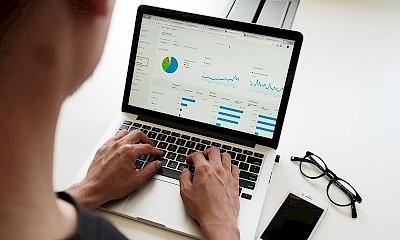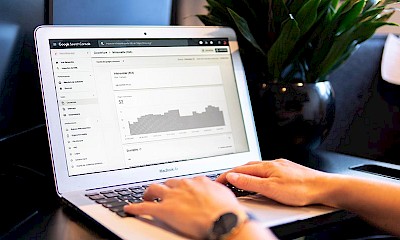CPC (cost per click) is a billing model in online marketing in which advertisers only pay when a user actually clicks on their ad. This means that no costs are incurred if an ad is merely displayed, but only if there is active interaction.
CPC is often used synonymously with the term pay-per-click (PPC) is often used synonymously. Both terms describe the same principle, although PPC is more common in English-speaking countries.
The most important facts about the CPC in brief:
- Definition: CPC = cost per click on an ad (pay-per-click).
- Calculation: Budget ÷ clicks (e.g., $200 ÷ 1,600 clicks = $0.125).
- Use: Mainly for Google Ads, Bing Ads, and affiliate marketing.
- Advantages: Transparency, costs only incurred for genuine clicks, good budget control.
- Influencing factors: Competition, industry, time, location, platform, ad quality, bidding strategy.
- Key figures: CPC is important for budget planning and campaign optimization, in conjunction with CR, CPA, and ROAS.
- eCPC: Effective CPC after campaign completion = realistic metric.
How does the calculation of the CPC work?
Calculation formula:
CPC = budget / number of clicks
Example:
With an advertising budget of €200 and a total of 1,600 clicks, this results in a CPC of €0.125, i.e. 12.5 cents per click.
Connection with other billing models:
CPM (Cost per Mille/TKP): Billing per 1,000 impressions, independent of clicks.
CPL (Cost per Lead): Billing per generated contact or prospective customer.
CPA (Cost per Action): Billing for a specific action (e.g. purchase, registration).
CPO (cost per order): Billing per order placed.
Where is the CPC used and what are the advantages?
Typical applications:
CPC is the standard model in SEA (Search Engine Advertising), for example in Google Ads or Bing Ads. CPC is also used as a billing basis in affiliate marketing.
Advantages:
Costs are only incurred for actual clicks → transparent and success-oriented
Very suitable for budget control and performance measurement
Key figure for optimization:
A decreasing CPC over time can indicate that campaigns have become more efficient - e.g. through optimized ads or less competition for relevant keywords.
What is the difference between the CPC and the eCPC?
The eCPC (enhanced CPC) is an enhanced CPC bidding strategy from Google Ads in which the manual CPC bid is automatically adjusted to achieve more conversions. If the probability of a conversion is high, Google increases the bid; if it is low, it is lowered. In short: more value per click at similar costs. However, some control is lost and the strategy only unfolds its potential if sufficient conversion data is available. Overall, the eCPC is therefore a hybrid between manual CPC and fully automated smart bidding.
What factors influence the CPC?
1. Competition & market
The CPC depends heavily on the competitive situation. In highly competitive industries such as finance or real estate, click prices are often significantly higher than in niche markets. Seasonal peaks in demand (e.g., Christmas, Black Friday) can also drive prices up.
2. Keywords & Search Intent
Keywords with high search demand or clear purchase intent (“take out insurance”) usually achieve higher CPCs than purely information-oriented search terms. The choice of match type (exact, phrase, or broad match) also influences costs.
3. Quality score & relevance
Google evaluates ads using the so-called quality score, which is composed of the click-through rate (CTR), the relevance of the ad text, and the quality of the landing page. A high quality score lowers the CPC, while low relevance increases costs.
4. Bidding strategy & budget
The CPC varies depending on the bidding strategy chosen (e.g., manual bidding, target CPA, or maximize clicks). The maximum bid and the size of the campaign budget also play a decisive role.
5. Ad rank & position
The CPC is determined by the so-called ad rank. This is calculated from the bid, the quality score, and the use of ad extensions. Higher positions in the search results are usually more expensive, but offer better visibility and a higher probability of clicks.
6. Target group & user behavior
The CPC can vary depending on the target group being addressed. Factors such as location, device (desktop or mobile), and the granularity of targeting influence click prices. Remarketing campaigns can also have higher CPCs because they specifically target users with a high probability of conversion.
7. Time Factors & Platform Influences
Click prices fluctuate depending on the time of day and day of the week. In B2B markets, advertising costs are often higher on weekdays than on weekends. In addition, advertising platforms dynamically adjust CPCs to maximize the likelihood of a conversion.
What relevance does the CPC have in campaign planning?
Tools such as the Google Keyword Planner provide the average CPC to estimate the costs.
CPC values and search volumes can be used to forecast the necessary advertising budget.
CPC must always be considered in relation to conversion rate (CR), return on investment (ROI), cost per action (CPA) and return on ad spend (ROAS).
What is the conclusion on the subject of CPC?
CPC is a central billing model in online marketing that offers full transparency, as only real clicks incur costs.
The amount depends on the competition, industry, time, location, platform and ad quality. In addition, CPC is not only used for budget planning, but is also a decisive lever for campaign optimization - especially in combination with key figures such as CTR, CR, CPA and ROAS. The eCPC also provides realistic values for post-calculation and increasing efficiency.
Frequently asked questions about the CPC:
CPC stands for cost-per-click and describes a billing model in online marketing.
The CPC is calculated by dividing the total cost of a campaign by the number of clicks generated:
CPC = total cost ÷ clicks
The CPC is calculated by dividing the total cost of a campaign by the number of clicks generated:
CPC = total cost ÷ clicks
CPC is particularly suitable for campaigns with direct performance targets, while CPM is ideal for reach and branding campaigns.
CPC (cost per click): billing based on clicks.
CPM (cost per mille): billing based on 1,000 visual contacts (impressions).
Important factors include: keyword competition, ad quality, position, industry.
Relevant keywords, good ads, optimized landing pages.
The amount of a good CPC depends on various factors such as the industry, the target platform, and the specific goals of the campaign. There is no universal answer, but a good CPC should optimize advertising costs in relation to the benefits achieved.
No, quality and conversion are more important.








